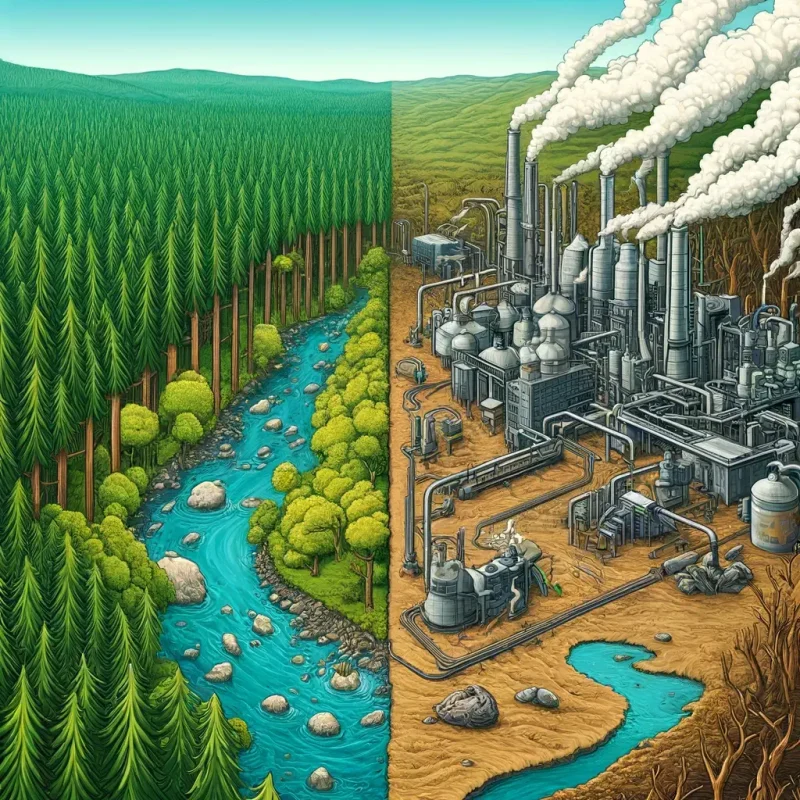Marijuana
The Environmental Impact of Hash Production
Introduction In recent years, the legalization of cannabis in Canada has led to a surge in hash production, a concentrated form of cannabis. While this has economic benefits, it’s essential to consider the environmental footprint of hash production. This article delves into the environmental aspects, focusing particularly on the production of hash from hemp, and explores both the negative impacts and the potential sustainable practices that can mitigate these effects.
Understanding Hash and Its Production Hash, or hashish, is made by extracting the trichomes from the cannabis plant. These trichomes contain cannabinoids like THC and CBD, which are then compressed into a solid form. The production process varies, but common methods include hand rubbing, sieving, and using solvents. Each method has distinct environmental implications, especially concerning resource use and waste.
The Environmental Footprint of Hemp Cultivation Hemp, a variety of the Cannabis sativa plant, is often touted for its environmental benefits, such as its low need for pesticides and its ability to sequester carbon. However, like any agricultural activity, hemp cultivation has its environmental costs. According to a study published by the American Chemical Society, significant concerns include water usage, land use, and the carbon footprint of farming practices .
Negative Environmental Impacts of Hemp
Water Consumption and Pollution
Hemp requires substantial water during its growth cycle. In regions where water scarcity is an issue, this can exacerbate local water stress. Additionally, the runoff from hemp farms can carry fertilizers and pesticides into local water bodies, contributing to pollution and ecosystem disruption.
Land Use and Soil Health
While hemp is known for improving soil health by aerating the soil structure with its deep roots, intensive cultivation can lead to soil degradation. Continuous cropping without adequate crop rotation or fallow periods can deplete soil nutrients and lead to erosion.
Energy Use and Carbon Emissions
The energy requirements for producing hash, particularly when involving modern extraction methods that use solvents, are significant. These processes often rely on fossil fuels, contributing to greenhouse gas emissions. Moreover, the indoor cultivation of hemp plants for hash production typically requires artificial lighting, temperature control, and ventilation systems, all of which significantly increase the energy consumption.
Sustainable Practices in Hash Production
Innovative Farming Techniques
Adopting low-impact farming techniques can significantly reduce the environmental footprint of hemp cultivation. Techniques such as integrated pest management, organic farming, and the use of renewable energy sources can help make hemp cultivation more sustainable.
Water Management Strategies
Efficient water use practices, such as drip irrigation and rainwater harvesting, can mitigate the impact of hemp cultivation on local water resources. These practices not only reduce the amount of water needed but also minimize runoff and the potential for pollution.
Energy Efficiency and Renewable Energy
Improving energy efficiency in hash production facilities and switching to renewable energy sources can drastically reduce carbon footprints. Utilizing LED lighting, energy-efficient HVAC systems, and even solar or wind power can make a significant difference in the overall sustainability of hash production.
Looking Forward: The Path to Sustainability in Hash Production As the demand for hash continues to grow in Canada, the need for environmentally responsible production practices becomes increasingly crucial. Stakeholders in the cannabis industry, including farmers, producers, and policymakers, must collaborate to implement sustainable practices that minimize environmental impacts and ensure the industry’s long-term viability.
Conclusion The production of hash, particularly from hemp, presents several environmental challenges, but also opportunities for sustainable growth. By addressing the critical areas of water use, energy consumption, and land management, Canada can lead by example in creating a sustainable hash production industry that not only meets economic goals but also protects and respects the environment.
Frequently Asked Questions About Hash Production
- What are the primary environmental concerns with hemp cultivation?
- How can water usage in hemp farming be reduced?
- What are some sustainable practices that can be adopted in hash production?
- How does hemp cultivation impact soil health?
- Can renewable energy be effectively used in hash production?
References
















